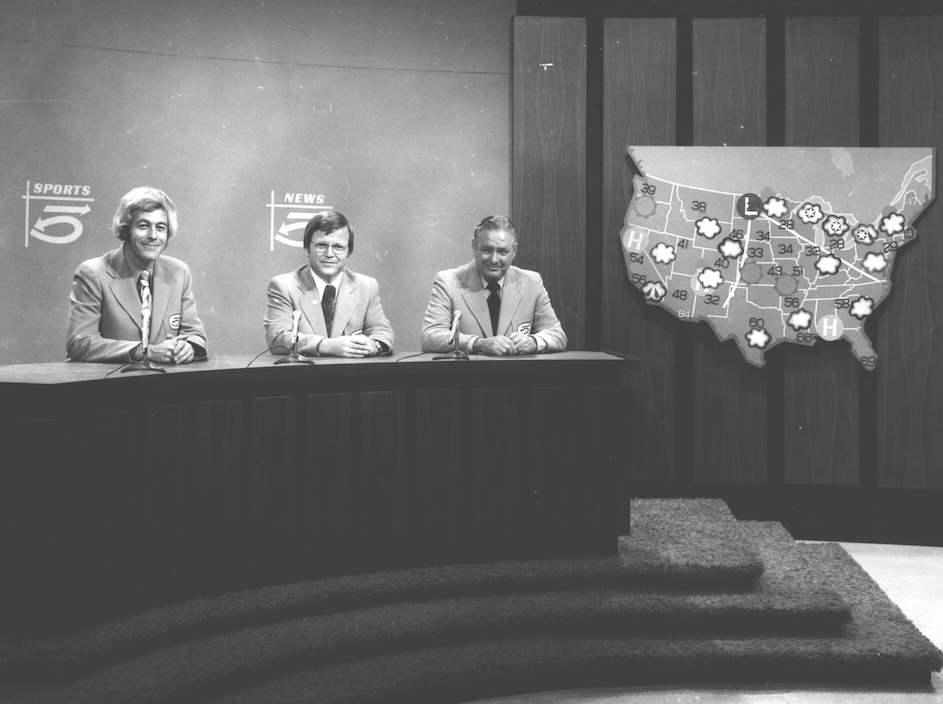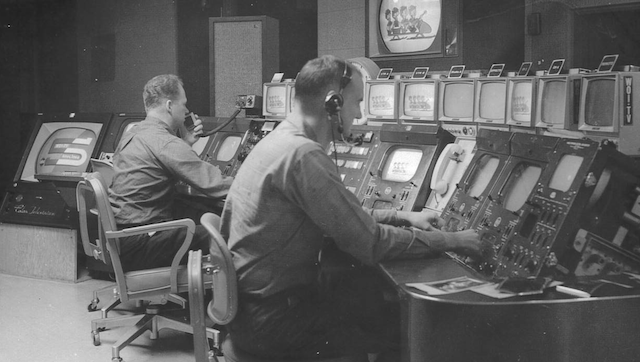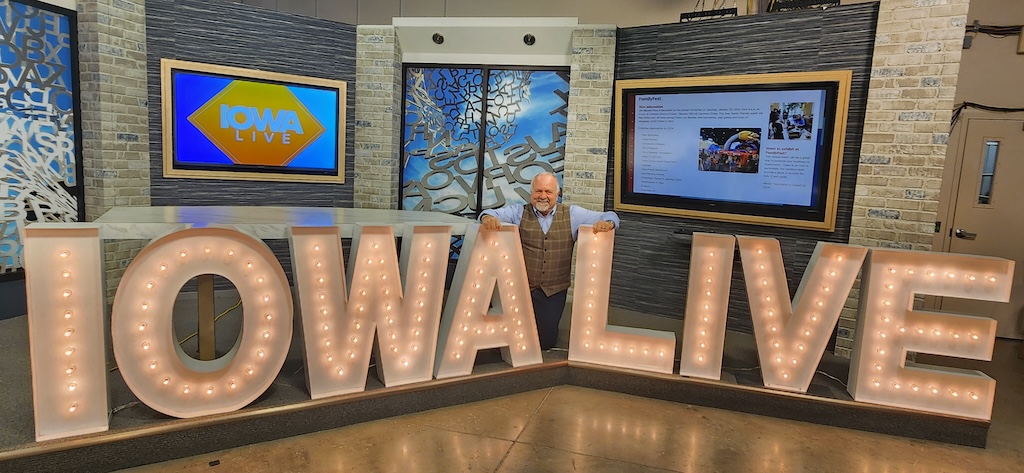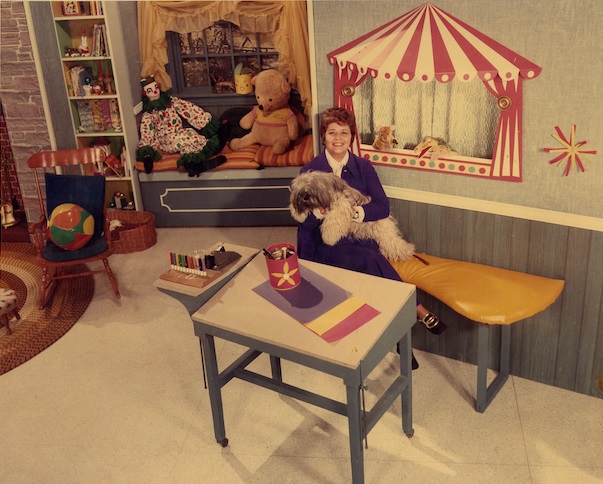
WOI-TV first went on the air on Feb. 21, 1950, when it was owned by Iowa State College. For many years, WOI-TV aired its early evening newscast at 5 p.m. instead of 6 p.m., leading the station to the slogan, “Where News Comes First.” The trio of Frank Snyder (sports), Paul Comer (news) and Walt Jensen (weather), pictured in the top photo circa 1974, held forth as the evening news team. In the bottom photo, WOI-TV’s control room in 1967 resembled the cockpit of an airplane with its variety of monitors, switchers and source inputs. Photos courtesy of Jeff Stein

Jan/Feb 2025 (Volume 17, Issue 1)
By Jeff Stein
As the decade of the 1950s began, Americans were optimistic.
Songs such as “Mona Lisa” and “Tennessee Waltz” were popular in those last days before rock ’n’ roll. Movies premiering in 1950 would be future classics, including “Harvey,” “Sunset Boulevard” and “All About Eve.”
Gasoline for vehicles was once again available, at a cost of 27 cents per gallon. Those who bought eggs at a store paid 60 cents per dozen for them, while dropping a letter in the mailbox on the way home required a three-cent stamp.
And a warm glow could be seen through the windows of homes across the country; an electric campfire, some called it, where family members gathered each evening. It was the glow from the earliest television sets.

Lou Sipolt, Jr., host of WOI-TV Channel 5’s weekday show “Iowa Live,” says that WOI-TV has enjoyed longstanding partnerships with organizations such as Variety—The Children’s Charity, Animal Rescue League of Iowa and Easterseals Iowa.
Those first sets were black-and-white, and became even more of a piece of living room furniture than the radios that came before. A Philco television with a 12.5-inch, round screen—standard for the time—cost nearly $200. That was no small amount, since the average family income was about $3,000 per year.
But after two world wars with the Great Depression sandwiched in between, Americans were eager to enjoy life, which helped explain the boom in development of television.
Now, 75 years after the first stations began broadcasting in Iowa, the story of one of those pioneers in television remains unique in American history.

“The Magic Window,” hosted for all but the first three years by Betty Lou McVay Varnum, became the longest-running, locally-produced children’s program in U.S. television history, running from 1951 to 1994.
It was on Feb. 21, 1950, that WOI-TV, owned by Iowa State College, first went on the air on Channel 4. Those aren’t mistakes—the educational institution was still known as “Iowa State College” at the time, and the station was originally found on Channel 4.
WOI-TV was the 100th television station in the United States and the second to take to the air in Iowa. The first, WOC-TV, signed on from Davenport on Oct. 31, 1949; its sibling, WOC-AM, was the first commercial radio station in Iowa, signing on in February 1922.
Iowa State had begun experiments in radio broadcasting as early as 1911 and holds the distinction of being the first holder of an educational radio station license in the U.S. What was then called 9YI took to the air in November 1921; it became WOI-AM in April 1922.
So when Iowa State decided to augment its broadcasting operation with a television station, naturally the college presumed it would be educational. With the urging of Iowa State College President Charles Friley, a very early application for a television license was filed on Feb. 13, 1945. The application was granted on Sept. 19, 1946—the first television station licensed to a college.
The plan was to treat WOI-TV as an educational station; however, it was granted a license for a frequency reserved for commercial stations. That led to an extended period of conflict between serving an educational mission, and being competitive with solely commercial operations.
Even though the license was approved in 1946, no funding had been allocated for a television station. By July 1949, WOI-FM began broadcasting; equipment began arriving for WOI-TV soon after, with the plan to use the new tower for both FM radio and television.
TO READ THE ENTIRE STORY AND OTHER FASCINATING STORIES ABOUT IOWA HISTORY, subscribe to Iowa History Journal.
